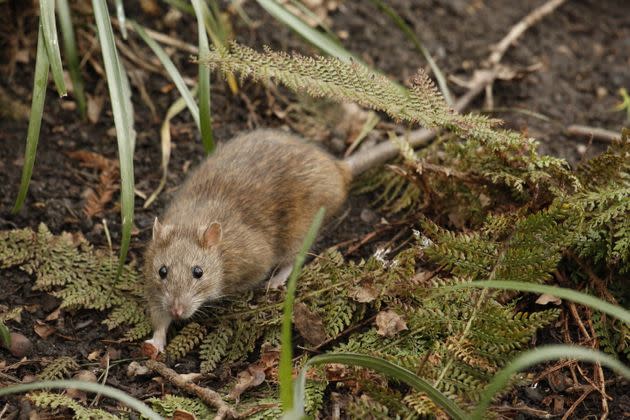In the 2006 animated comedy Flushed Away, Roddy St. James, a spoiled pet mouse voiced by Hugh Jackman, is flushed down the toilet and into the sewage city of Ratropolis. In his attempt to get home, he uncovers a plot by the animal mob boss, The Toad, to flood Ratropolis with a wave of excrement during the halftime toilet break of the FIFA World Cup. See, the toad used to be Prince Charles’ pet, but then Charles got a rat and flushed it down the toilet, so now he hates rats and… it’s a whole thing.
Humans have also been known throughout our history for making intricate mousetraps. We’re not normally driven by a perceived offense from all rodents, but mice and rats have posed a threat to health and resources over time, and in response we’ve come up with all sorts of ways to get rid of them. Now, thanks to scientists from the University of Adelaide, we may have the mousetrap to end all mousetraps. According to a recent article in the Proceedings of the National Academy of Sciences, we’re taking the fight straight to their DNA.
For many of us, rodents are little more than an occasional nuisance or even a beloved pet, but in some places they are invasive, causing harm to both humans and other species. This is especially true in closed environments such as islands, where particularly harmful rodents can spread so quickly that they crowd out native species. Faced with this problem, the Adelaide researchers developed a modified version of CRISPR, which they call t-CRISPR, to spread a mutation throughout the population.
This form of genetic engineering is often referred to as gene drive and differs from conventional gene editing in one important respect. Traditionally, gene editing modifies a trait or set of traits in an individual, but these changes are not necessarily passed on to offspring. A gene drive increases the likelihood that a trait or set of traits will be passed on to the next generation. For this work, the scientists relied on a naturally occurring mutation in mice that renders them infertile. By targeting that mutation and increasing the likelihood of inheritance, you get an ever larger population of infertile mice, and the overall population decreases. At least that’s what the models show.
The team used advanced computer modeling to simulate an environment with an invasive population of 200,000 mice. Then they just introduced 250 modified mice with the desired mutation in the fertility gene and got the simulation to work. They found that their gene drive could ramp up the inheritance of this mutation and wipe out the entire population in just 20 years.
Of course, a simulation is only as good as its real-world results, and that depended on actually being able to get transgenic mice to pass on the faulty genes. To find out, the team engineered genetically engineered mice with t-CRISPR and confirmed that they had biased transmission – which increased inheritance – of the target mutation at levels that successfully wiped out the population in the simulation.
It’s worth noting that genetic engineering of a population on this scale involves some ethical and moral considerations that need to be worked out before we go full speed ahead. These talks are ongoing as similar efforts to use gene drives in insect populations are being developed. It can be argued that this type of genetic population control is the humane solution. It does not involve any painful traps or chemicals of any kind. The mice that are born will go on with their lives as usual, they will just have fewer and fewer offspring in each succeeding generation until they perish.
Instead of snares and poisons, we turn their gene pool into a slowly tightening noose. It’s the kind of mousetrap you can’t escape from because you don’t even know you’re in it.

It’s a fan thing
Join SYFY Insiders for access to exclusive videos and interviews, breaking news, sweepstakes and more!
Sign up for free

/cloudfront-us-east-1.images.arcpublishing.com/gray/XEJMC7PTY5G3RPB4XX5AUY6Q3I.jpg)







